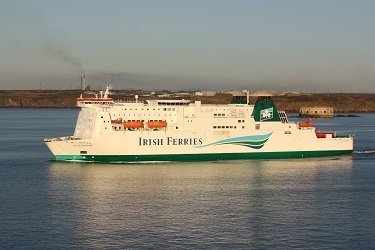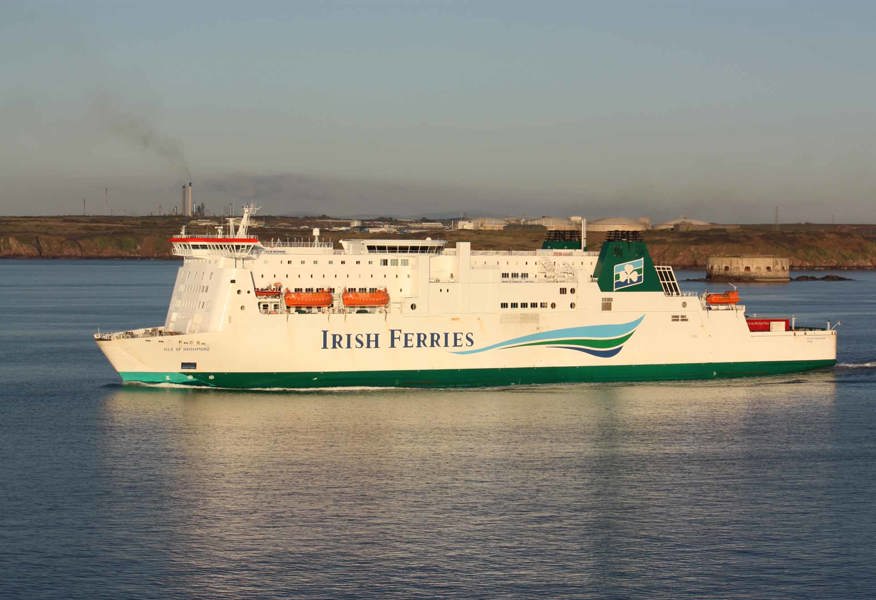As featured in the Port’s 2020 Leisure Safety Digest.
 Summary
Summary
At around 00:30 hours mid-July, the twice-daily running Isle of Inishmore ferry was on a steady course 050 degrees between Wear Spit beacon and Carr Spit beacon. Calm weather conditions, calm seas and no moon. During the approach to Carr Spit beacon she started to alter course to starboard. At the same time the Master spotted small waves on the surface in the area of Carr Spit No2 buoy. Immediately the bridge team started to search for a source of the waves. Shortly after, they spotted a small speed boat without any navigation lights passing Carr Spit beacon and crossing their bow approximately 20 meters ahead. The Isle of Inishmore was making approximately 10 knots at this point and the small speed boat passed their port side less than 10 metres off. The Master immediately arrested the swing to starboard to avoid hitting the small craft with the stern. The lookout on the port wing shortly after reported the boat passing clear, so the Inishmore regained her swing to starboard to follow the safe water channel and berthed safely at Pembroke Dock Ferry Terminal (PDFT).
Lessons
- This was potentially a very serious incident. Had the Isle of Inishmore not been vigilant in spotting the wake of the small craft, her stern could easily have collided with the small vessel. What many do not realise is that when large vessels are making a turn, their stern will swing correspondingly to the other side. In addition to this, her wash could have caused the small craft to capsize. In the dark, even in summer, the chances of survival are minimal. Cold water shock can cause heart attacks, even in the relatively young and healthy.
- Leisure vessels often assume that because they can see a commercial vessel, the commercial vessel can see them. Often this mistake is compounded by failing to assess closing speeds accurately, thinking that the larger vessel is going slower than it is. This combination of factors serves to put the leisure vessel in close quarters with the commercial vessel and in an extremely dangerous and vulnerable position. We assume that the leisure vessel on this occasion hadn’t planned to be in such close proximity in the dark, perhaps it was this misjudgement that found it there. A lack of situational awareness contributes to 22.5% of near misses in UK waters annually.
- The Merchant Shipping Act 1995 and, in particular, the International Regulations for Preventing Collisions at Sea 1972 (COLREGS) Part C – Lights and Shapes apply in this context and state in Rule 23 that a power driven vessel of less than 12 metres in length should exhibit an all round white light and sidelights. Annex 1 covers the positioning and technical details of lights and shapes. Part A Rule 1. makes clear that the regulations apply to all vessels upon the high seas and in all waters connected therewith navigable by seagoing vessels.
- How well do you think you stand out on a large vessel’s radar? The simple answer is not very well at all. Small fibreglass or plastic vessels are virtually impossible to spot on radar as they rarely give a return. For radar to pick you up, you need to be larger and preferably metal. One way you can help is by fitting AIS ‘B’ to your vessel or another solution is the installation of an ‘Active See Me’ radar target enhancer so increasing your vessel’s radar cross section.
- Not withstanding the inherent danger, it must also be noted that breaching the ‘COLREGS’ leaves the master of a vessel liable to prosecution under the Merchant Shipping Act, which on a guilty verdict would leave the master facing a fine of up to £50,000 and/or a prison sentence of up to 2 years.
The full document can be viewed here: 2020 Leisure Safety Digest


